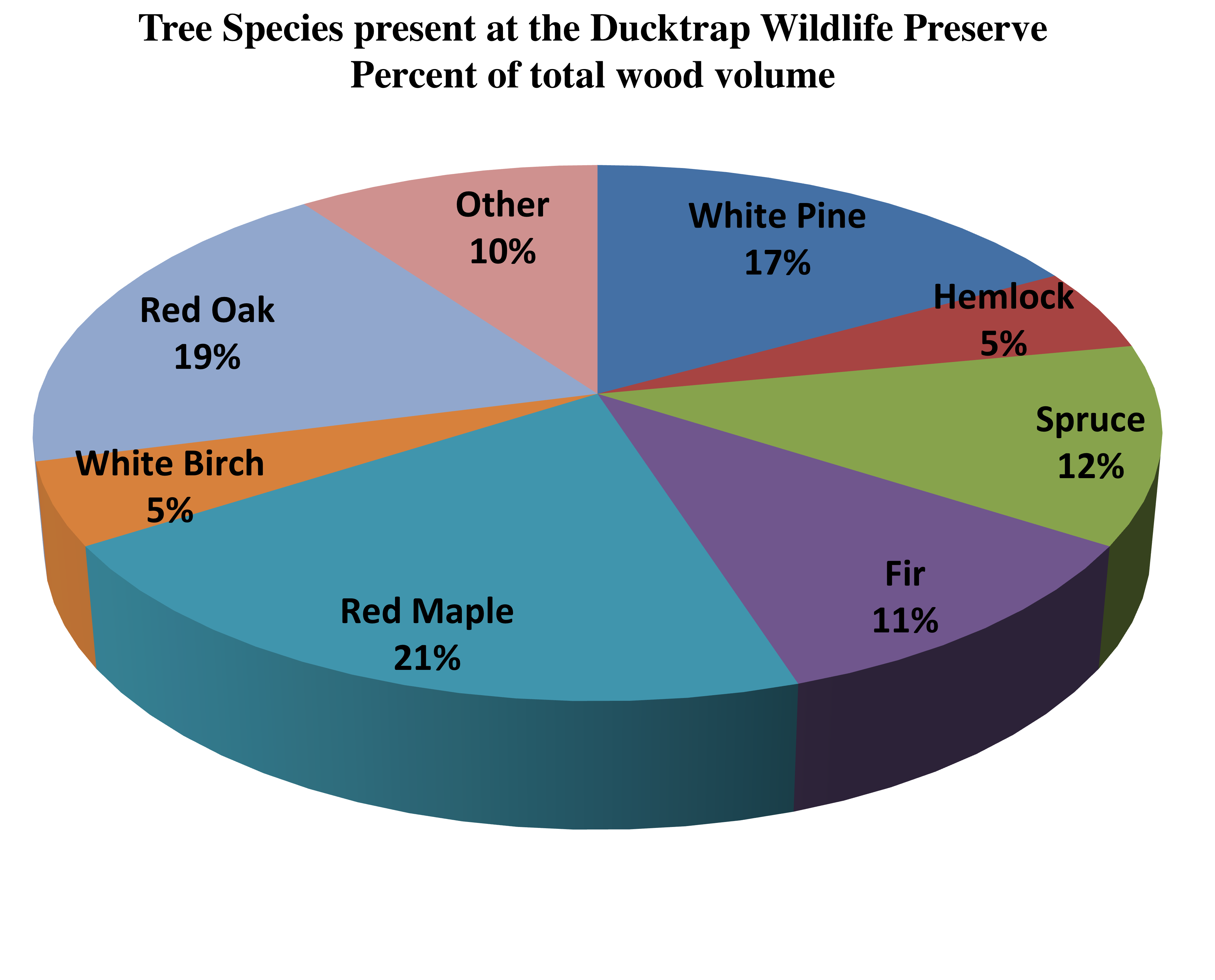Timber Resource
Forests cover the majority of the land owned by the Ducktrap Wildlife Preserve. All three major timber types are represented, although softwood acreage is very small. Mixedwood covers approximately 80% of the woodland, hardwood covers approximately 18% and softwood only approximately 2%.
The tree species present at the Ducktrap Wildlife Preserve include: White Pine, Hemlock, Spruce, Fir, Red Maple, White Birch and Red Oak. The breakdown of the percentage of each species is indicated in the pie chart below. The less common species present includes yellow birch, white ash, sugar maple, aspen, beech and black cherry trees. These species are included in the “other” category in the chart below.
 Timber types are further identified based on dominant canopy height and canopy closure. A DBH measurement represents the tree diameter at breast height, measured at 4.5 feet above ground. Much of the woodland is made up of mature pole (5-9 inches DBH) and saw timber (10 inches or greater DBH) that are 70-80 years old. Dominant heights for most types are considered moderate sized at 30-60 feet or a combination of moderate and tall at over 60 feet.
Timber types are further identified based on dominant canopy height and canopy closure. A DBH measurement represents the tree diameter at breast height, measured at 4.5 feet above ground. Much of the woodland is made up of mature pole (5-9 inches DBH) and saw timber (10 inches or greater DBH) that are 70-80 years old. Dominant heights for most types are considered moderate sized at 30-60 feet or a combination of moderate and tall at over 60 feet.
The above description of the timber resources of the Ducktrap Wildlife Preserve was adapted from a 2000 report by Mitchell Kihn of Mid-Maine Forestry.

